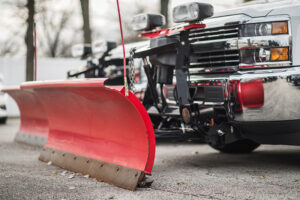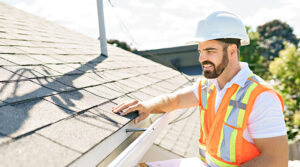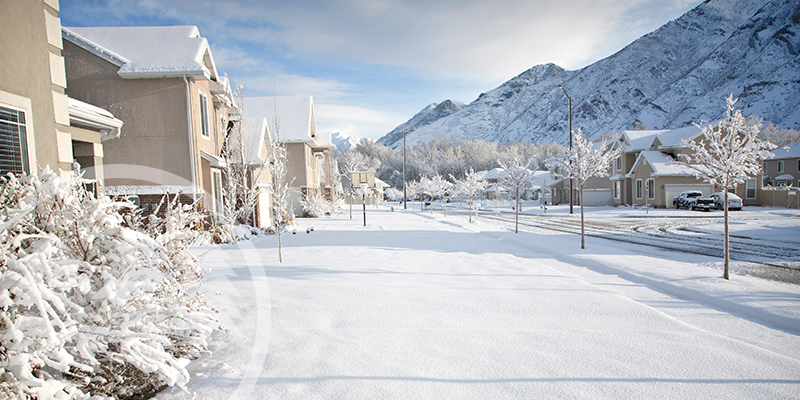To any planned community, HOA winter preparation is vital. The winter season, especially in some states, can be very harsh. Pipes can freeze over and burst, while snow can quickly pile up and cause traffic problems. A competent HOA board would do well to get ahead of the winter months by preparing the entire association for the cold season and everything that comes with it.
Why HOA Winter Preparation Matters
As the famous saying goes, “Preparation is the key to success.” This also applies to homeowners associations, particularly when it comes to winter preparation. While HOAs in warmer states can get away with little to zero preparation, those in colder states don’t have the same luxury.
Preparing your HOA for winter is essential because cold temperatures can cause a great deal of damage. When you fail to winterize your pipes, for instance, they can freeze and burst. Winter weather can also be unpredictable at times, bringing freezing rain, heavy snowfall, high winds, sleet, and ice. All of these things can cause damage and premature deterioration, forcing your HOA to pay for costly repairs or replacements.
HOA winter preparation is also a good way to protect your association from liability. When you fail to winterize your community, residents and guests can get into all sorts of accidents. If a court finds the HOA liable for these accidents, there are significant financial consequences that come with it.
All in all, failing to prepare your HOA for the winter season is a financial misstep. Sure, you must allocate a portion of your budget to winterize your community. However, that amount is nothing compared to the exorbitant costs you may incur if you skip winter preparation.
Tips for an HOA Preparing for Winter
It is easy enough to say that you need to prepare your HOA for the cold season. Some associations, though, don’t know where to begin. To help you out, here is an HOA winter preparation checklist you can use.
1. Give Yourself Enough Lead Time
Many HOA boards ask themselves, “When should I start preparing for winter?” Ideally, you would start preparing for winter before the first freeze hits. For a lot of associations, that usually falls in the autumn season.
Autumn is arguably the best time of the year to begin HOA winter preparation. At this time, temperatures start dropping but not to the point of freezing. It also gives communities three months or so to get everything in order. When you plan early, you can be ready for unwanted surprises.
2. Schedule Snow Removal
 A big part of HOA winter preparation is snow removal. Make sure to schedule your snow removal appointments ahead of time. This way, you can secure a slot before the first storm hits. Snow removal companies will undoubtedly be fully booked once snowfall comes around. If you don’t call ahead, your HOA will struggle to find a company that will take the job.
A big part of HOA winter preparation is snow removal. Make sure to schedule your snow removal appointments ahead of time. This way, you can secure a slot before the first storm hits. Snow removal companies will undoubtedly be fully booked once snowfall comes around. If you don’t call ahead, your HOA will struggle to find a company that will take the job.
This will be much easier if the HOA is already working with a contractor for snow removal. All it takes is to call ahead before the snowy weather hits. However, if the HOA is dissatisfied with their previous vendor, they need to spend time looking for a service provider. To do this, ask for recommendations from other contractors or look online. Remember to find a vendor that provides all the necessary services like winter road maintenance.
Of course, snow removal isn’t free. Thus, a competent HOA board would have planned for snow removal and allocated funds in the annual budget. If the forecast shows an extra snowy season, the association may need to tap into the HOA’s reserves. Remember not to skimp on snow removal, as it can jeopardize drivers and pedestrians improperly.
3. Get Your Plumbing Ready
Another tip to winterize your HOA community is to get your plumbing ready, significantly if temperatures can drop to freezing levels. When water freezes, pipes can burst, and entire sewage systems can be damaged. Repairing frozen pipes can be expensive, so prevention is the smart alternative.
To prepare your pipes for the cold season, drain water from sprinkler systems and outdoor pools. You won’t need either of these in the winter, so it is best to shut them off for now. Don’t forget to disable any outdoor faucets or showers, too. For exterior pipes, protect them with thermal padding to prevent freezing.
Indoor spaces that house critical piping systems should also be well-heated. Most of the time, these include basements and attics. Even if these places don’t see a lot of visitors, keeping them well-heated will prevent pipes from freezing over.
4. Check All HVAC Systems
Your heating, ventilation, and air conditioning (HVAC) system keeps residents comfortable. Thus, you should invest in HVAC maintenance, even during the wintertime.
In freezing temperatures, your HVAC system can keep people warm. If your HVAC system isn’t up to standard or working properly, you risk everyone’s safety. Hire a professional to inspect your HVAC system to ensure it’s in good condition. Inspect before the winter season arrives so the maintenance work can be done under good weather conditions.
5. Inspect Roofs and Exteriors
 This is another integral aspect of preparing an HOA community for winter. Your HOA board should hire a professional to inspect all common buildings and facilities, including roofs and exteriors.
This is another integral aspect of preparing an HOA community for winter. Your HOA board should hire a professional to inspect all common buildings and facilities, including roofs and exteriors.
The winter weather can cause extreme damage to buildings, especially ones that don’t have proper insulation or sealing. If there are cracks or gaps, the cold air can leak indoors and cause problems. A maintenance professional can conduct a thorough inspection and even make necessary repairs before the winter season comes around.
6. Anticipate Possible Blackouts
Americans are no strangers to power outages, especially during the winter season. Worse yet, they tend to happen more often in the middle of a blizzard or winter storm. Although it is next to impossible to predict a power outage, there are some things you can do to prepare your HOA.
If your budget permits, consider investing in backup generators or battery-powered heaters. These can help keep common areas well-heated. Your HOA board should also assemble emergency kits. These kits should consist of flashlights, batteries, radios, first aid supplies, blankets, and portable heating packs, at the very least. Keep these kits in common areas so residents can get to them when necessary.
7. Remind Homeowners to Winterize Their Homes
While it is important to winterize your HOA’s common areas, you shouldn’t forget about your residents. Ensure to keep homeowners informed by disseminating information about snow removal schedules, inspections, and emergency plans. It is also a good idea to distribute winterization tips for homeowners to prepare their properties for the cold season.
8. Inspect the Fireplaces and Chimneys
Chimneys and fireplaces play critical roles in the winter. They ensure the residents and occupants of common areas are warm and safe. However, unclean and unmaintained chimneys and fireplaces can be a liability and safety hazard.
Remember to inspect these every 50 uses or at least once a year. Clean them so debris and soot don’t build up. Moreover, remember to regularly clean out the ashes, use a fireplace guard, and burn only materials that are safe for indoor burning.
It’s also important to inspect your carbon monoxide and smoke detectors. Make sure to replace their batteries and test them as needed. Finally, remember to have proper circulation within the area. If the community will use the fireplace in the clubhouse, remember to leave windows open and ensure there’s enough air circulation.
9. Insulate Indoor Common Areas
Homes are not the only structures in need of proper insulation. The community’s common areas, such as fitness centers and clubhouses, also need it. Otherwise, the heating system will work twice as hard and the electric bills could skyrocket.
Remember to include thorough draft inspections as part of HOA winter preparation. The board can conduct an energy assessment by themselves or hire a professional. Moreover, it’s best to seal any gaps around doors, windows, and walls.
10. Lock Unused Facilities
If the HOA has non-winter facilities, it’s best to close and lock them down for the winter. This way, the HOA does not need to worry about conducting regular maintenance on them. Doing this can also reduce the risk of accidents for the community.
For example, let’s say the HOA decides to close the community pool for the winter because it isn’t safe. Remember to make sure to add guardrails around the area or lock the gates leading to the pool. Moreover, post large signages stating that the pool is closed for the winter. The board can also post it on the HOA website.
11. Prepare Emergency Repair Services
Even with all that HOA winter preparation, accidents still happen during the winter months. As such, it’s best to prepare the contact details of emergency repair services. This way, the board and homeowners know who to call and what to do in case something happens.
Remember to prepare the contact details of the vendors handling HVAC, plumbing, and post-storm services. It’s also a good idea to call them in advance and let them know you’ll be in touch in case of emergencies. This way, the vendor can prioritize calls from your HOA. Finally, the HOA can also help the homeowners by letting them know who to call for consultations, inspections, and emergency repair financing.
12. Get Backup Housing Plans Ready
Emergencies happen and when they do, they can render homes uninhabitable temporarily. For example, homes may lose electricity and heat or have burst pipes. These will often call for temporary housing. An HOA can show value to its homeowners by preparing temporary alternative housing options during emergencies.
13. Winterize Outdoor Elements and Landscaping
Make sure to winterize the HOA’s outdoor elements as part of HOA winter preparation. Remember to cut back shrubs and tree branches that block lighting or signs. Make sure to examine outdoor handrails and tighten loose elements.
If the HOA uses outdoor equipment, turn off the electrical breakers. It’s also best to inspect hose bibs to ensure they’re properly sealed. Gutters, downspouts, and yard drains should also be clean and free of debris. Meanwhile, outdoor hinges and locks should be sprayed with a lubricant so they can last during the winter.
Apart from these, it may be wise to assemble a winterization committee during the fall. This one-time committee can plan activities, distribute tasks, and make sure the entire HOA is prepared for the winter. They can reduce the board’s burden while making sure the HOA is safe and ready.
14. Assemble Necessary Supplies
The winter season comes with many dangers. Remember to prepare the community by assembling essential backup supplies. Make sure the HOA has enough of the following:
- Smoke alarm batteries
- AM/FM radio for emergencies
- Distilled or bottled water
- Fire extinguishers
- Sand
- Batteries
- Candles, flashlights, and matches
- Generator fuel
- Antifreeze
Preparation Is Key
While HOA winter preparation involves a lot of steps, they are all worth the effort in the end. Preparing your community for the cold season can protect the association’s assets and residents. It may require some work and a portion of the budget, but the payoff is certainly immense.
Winterization is often troublesome for HOA board members with full-time jobs. Delegate the job to an experienced management company like Cedar Management Group. Call us today at (877) 252-3327 or contact us online to learn more!
RELATED ARTICLES:
- 9 Tips To Prepare HOA Community For Fall Season
- HOA Holiday Events: Community Activities For Everyone To Enjoy
- 9 HOA Springtime Landscaping Rules For The Community






